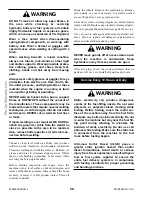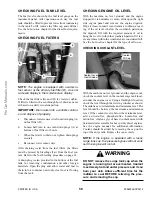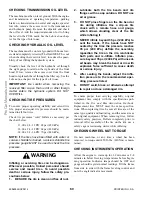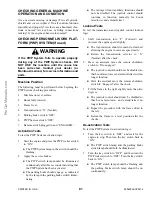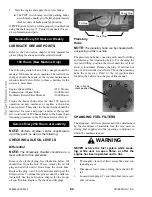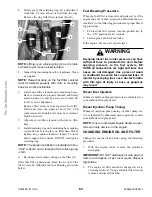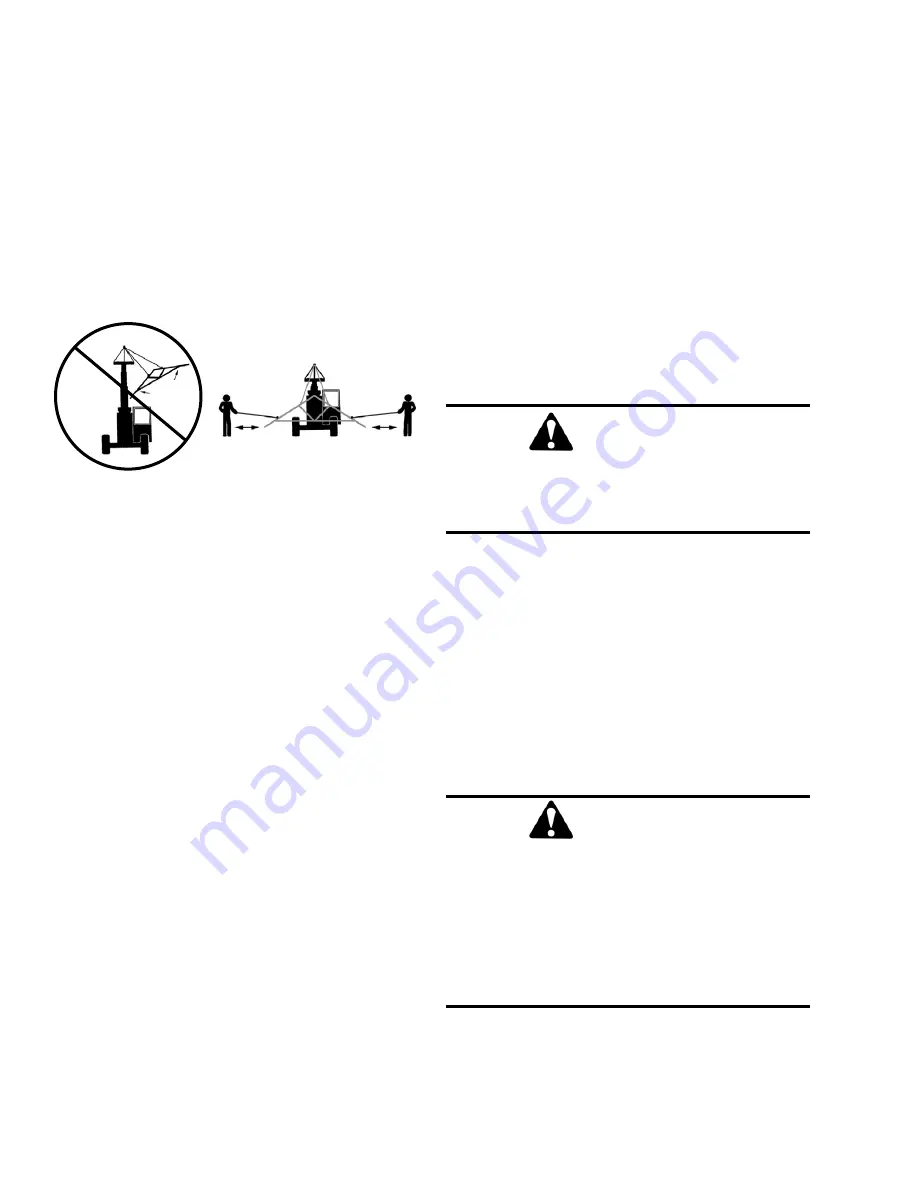
50960025/CP0514
48
PRINTED IN U.S.A.
2.
Rigging should comply with OSHA regulation
§1910.184, “Slings,” or §1926.251, “Rigging
equipment for material handling.”
3.
Be sure the rigging equipment is clear of any part
of the machine or machine attachment before lift-
ing the load.
4.
Avoid lifting double-tiered or any unstable loads.
5.
Only lift loads vertically and clear from any adja-
cent obstacles. Never drag the load horizontally.
6.
Use multiple lift points and taglines to restrain the
load from swinging or rotating.
Carrying Suspended Load
1.
Rigging between the load and attachment should
be as short as possible to reduce boom height.
2.
Do not raise the load more than 12 inches (305
mm) above the ground or raise the boom more
than 45 degrees.
3.
All telehandler movements should be performed
slowly and cautiously to prevent load swing.
Avoid abrupt movement. Do not exceed walking
speed.
4.
Use a signal person anytime the load restricts the
operators view or assistance is required. The sig-
nal person should remain in contact (verbally or
visually) with the operator at all times until the
load is placed.
Ground Level Suspended Load Placement
1.
Be sure the area under the load and around the
telehandler is clear of equipment and personnel.
2.
Lower the load to the ground till load is stationary
and the rigging is loose from the load. Have sig-
nal person disconnect the rigging from the load.
3.
Raise boom enough to clear the rigging from the
load before backing the telehandler away from the
load.
Elevated Suspended Load Placement
1.
Bring the telehandler as close as possible to the
landing point.
2.
Level the telehandler BEFORE raising the load.
Use extreme caution for high placement. Be sure
personnel are clear of the load landing area.
3.
Set the parking brake, shift the transmission into
neutral, hold the service brake pedal fully applied
and slowly raise the load.
4.
As the load approaches the landing point, feather
the boom control at minimum speed until the load
is just above the landing point.
5.
With the assistance of a signal person, continue
the feathering technique to lower the load into
place.
6.
Once the load is stationary on the landing point
and the rigging is loose from the load, have the
signal person disconnect the rigging from the
load.
7.
Raise boom enough to clear the rigging from the
load. Slowly and carefully, reverse the telehandler
till the rigging is clear of the load.
8.
Lower the boom to travel height.
Installation of a Personnel Work Platform
(PWP)
1.
Center the forks on the carriage, spaced apart to
match the distance required to engage the PWP.
WARNING
NEVER place the signal person between the
load and the telehandler or other stationary
objects.
WARNING
The machine must not be used to lift or carry
personnel, or be fitted with any form of per-
sonnel work platform unless fitted with the
optional PWP System.
If fitted with the PWP System, the Mandatory
Work Platform Safety Rules (p. 15) must be
adhered to at all times while lifting personnel.

























